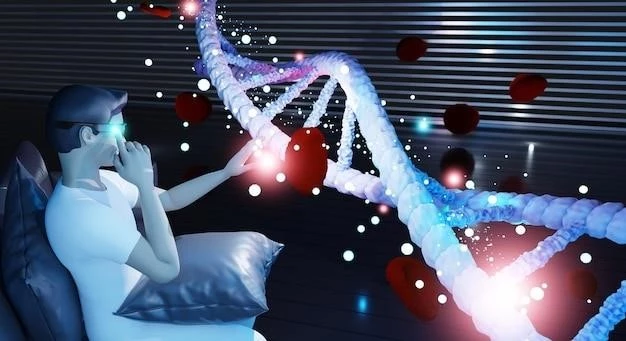Introduction to PEHO Syndrome
Progressive encephalopathy with edema, hypsarrhythmia, and optic atrophy (PEHO) syndrome is a rare genetic disorder with significant clinical features.
Description and Background
Progressive encephalopathy, hypsarrhythmia, and optic atrophy (PEHO) syndrome is a rare genetic disorder with a poorly understood etiology. It is characterized by severe neurological manifestations such as infantile hypotonia, profound delay in motor and intellectual development, and seizure disorder. The condition typically presents in early infancy with symptoms including hypsarrhythmia, optic atrophy, and brain atrophy. Through genetic studies, researchers have identified ZNHIT3 gene mutations as potential contributors to this syndrome.

Clinical Presentation of PEHO Syndrome
PEHO syndrome is characterized by early symptoms such as hypsarrhythmia, optic atrophy, brain atrophy, and severe neurological manifestations.
Cardinal Features
PEHO syndrome presents with cardinal features including infantile hypotonia, seizure disorder, profound motor and intellectual delay, along with characteristic symptoms such as hypsarrhythmia, optic atrophy, and brain atrophy.
Radiologic Characteristics
PEHO syndrome is associated with radiologic characteristics such as alterations in myelination, severe neuronal loss in the cerebellum’s inner granular layer, progressive atrophy of the cerebellum and brainstem, as well as relative preservation of Purkinje cells.

Genetic Basis of PEHO Syndrome
Progressive encephalopathy with edema, hypsarrhythmia, and optic atrophy (PEHO) syndrome’s genetic origin remains under investigation.
Single Gene Disorder Hypothesis
Researchers aim to determine whether PEHO syndrome is primarily caused by mutations in a single gene, potentially shedding light on the genetic underpinnings of this rare neurological disorder.
Role of ZNHIT3 Gene
The ZNHIT3 gene plays a crucial role in the pathogenesis of PEHO syndrome. It has been identified as a significant genetic factor in both PEHO syndrome and PEHO-like disorders, particularly in populations beyond Finland. Research indicates that mutations in ZNHIT3 contribute to the development of this rare neurological condition.
Diagnosis and Differential Diagnosis
Diagnostic evaluations for PEHO syndrome include clinical assessments, genetic testing, and neuroimaging to differentiate from other similar conditions.
Diagnostic Criteria
The diagnostic criteria for PEHO syndrome involve a combination of clinical evaluations, genetic testing, neuroimaging studies, and careful observation of specific symptoms to accurately identify and differentiate the condition from other disorders with overlapping features.
Distinction from PEHO-Like Syndromes
In differentiating PEHO syndrome from PEHO-like syndromes, genetic analysis and clinical assessments play a crucial role to identify specific genetic mutations and distinguish distinct syndromes with overlapping characteristics.
Pathophysiology of PEHO Syndrome
PEHO syndrome’s pathophysiology involves defects in rRNA processing leading to altered cellular translation, indicating a potential ribosomopathy and translation dysregulation mechanism.
RRNA Processing Defects
PEHO syndrome is associated with defects in rRNA processing, which lead to aberrant cellular translation. This dysfunction points towards a potential ribosomopathy as well as translation dysregulation in the pathophysiology of PEHO syndrome.
Ribosomopathy and Translation Dysregulation
Mutations associated with PEHO syndrome cause defects in rRNA processing and disrupt cellular translation, suggesting a potential ribosomopathy mechanism and translation dysregulation contributing to the pathophysiology of the disorder.
Management and Treatment Approaches
Therapeutic approaches for PEHO syndrome include physical therapy to prevent contractures, general supportive care, and potentially targeted genetic interventions to address the underlying mutations.
Physical Therapy and Supportive Care
Management of PEHO syndrome includes physical therapy to address challenges such as contractures and supportive care to enhance the individual’s quality of life.
Research on Genetic Mutations
Current research efforts focus on identifying and understanding the genetic mutations associated with PEHO syndrome to pave the way for targeted interventions and personalized treatment strategies based on the individual’s genetic profile.
Prognosis and Complications
PEHO syndrome is associated with progressive brain atrophy, optic atrophy, and cerebellar atrophy, leading to significant complications.
Progressive Brain Atrophy
PEHO syndrome is associated with progressive brain atrophy, which may lead to significant neurological complications over time, emphasizing the importance of continuous monitoring and management.
Optic Atrophy and Cerebellar Atrophy
PEHO syndrome is often associated with optic atrophy and cerebellar atrophy, leading to visual impairments and neurological complications that require specialized management strategies.
Conclusion
PEHO syndrome presents a challenging clinical landscape marked by progressive brain atrophy, optic atrophy, and cerebellar atrophy, necessitating in-depth management strategies and specialized care.
Summary of PEHO Syndrome
PEHO syndrome is a complex neurodegenerative disorder characterized by progressive brain atrophy, optic atrophy, and cerebellar atrophy. Understanding the genetic mutations, pathophysiology, and clinical presentations are crucial for effective management and care of individuals with this rare condition.
